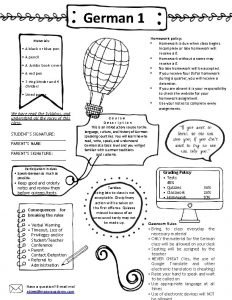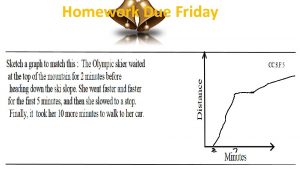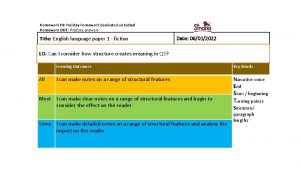ANNOUNCEMENTS v Homework 2 is due on Monday
























- Slides: 24

ANNOUNCEMENTS v Homework #2 is due on Monday in lecture. v Change to 1 b. Do not calculate a c 2 value. Just calculate the expected phenotypic ratios if the genes for brown-ness and disease-resistance are actually the same gene (or completely linked). Then, say whether complete linkage is possible given the observed data. v Don’t forget about my office hours (MWF 9 -11) and the Thursday night Q&A sessions.

From last time. . . Extensions of Mendelian analysis v Genes follow Mendel’s law of inheritance, but differences in gene action can generate more complex inheritance patterns for phenotypes v Single genes - dominance, codominance, incomplete dominance, overdominance, allelic series, pleiotropy, lethals v Multiple genes - epistasis, polygenic traits v Genes & the environment - sex-influenced traits, environment-dependent gene expression, incomplete penetrance


Today. . . Pedigree analysis v In humans, pedigree analysis is an important tool for studying inherited diseases v Pedigree analysis uses family trees and information about affected individuals to: vfigure out the genetic basis of a disease or trait from its inheritance pattern vpredict the risk of disease in future offspring in a family (genetic counseling)

Today. . . Pedigree analysis v How to read pedigrees v Basic patterns of inheritance vautosomal, recessive vautosomal, dominant v. X-linked, recessive v. X-linked, dominant (very rare) v Applying pedigree analysis - practice

Sample pedigree - cystic fibrosis male female affected individuals

Autosomal recessive traits • Trait is rare in pedigree • Trait often skips generations (hidden in heterozygous carriers) • Trait affects males and females equally

Autosomal recessive diseases in humans v Most common ones • Cystic fibrosis • Sickle cell anemia • Phenylketonuria (PKU) • Tay-Sachs disease v For each of these, overdominance (heterozygote superiority) has been suggested as a factor in maintaining the disease alleles at high frequency in some populations

Autosomal dominant pedigrees • Trait is common in the pedigree • Trait is found in every generation • Affected individuals transmit the trait to ~1/2 of their children (regardless of sex)

Autosomal dominant traits v There are few autosomal dominant human diseases (why? ), but some rare traits have this inheritance pattern ex. achondroplasia (a sketelal disorder causing dwarfism)

X-linked recessive pedigrees • Trait is rare in pedigree • Trait skips generations • Affected fathers DO NOT pass to their sons, • Males are more often affected than females

X-linked recessive traits ex. Hemophilia in European royalty

X-linked recessive traits ex. Glucose-6 -Phosphate Dehydrogenase deficiency • hemolytic disorder causes jaundice in infants and (often fatal) sensitivity to fava beans in adults • the most common enzyme disorder worldwide, especially in those of Mediterranean ancestry • may confer malaria resistance

X-linked recessive traits ex. Glucose-6 -Phosphate-Dehydrogenase deficiency

X-linked dominant pedigrees • Trait is common in pedigree • Affected fathers pass to ALL of their daughters • Males and females are equally likely to be affected

X-linked dominant diseases • X-linked dominant diseases are extremely unusual • Often, they are lethal (before birth) in males and only seen in females ex. incontinentia pigmenti (skin lesions) ex. X-linked rickets (bone lesions)

Pedigree Analysis in real life: complications Incomplete Penetrance of autosomal dominant traits => not everyone with genotype expresses trait at all Ex. Breast cancer genes BRCA-1 and BRCA-2 & many “genetic tendencies” for human diseases

Pedigree Analysis in real life: complications Sex-limited expression => trait only found in males OR females

Pedigree Analysis in real life Remember: • dominant traits may be rare in population • recessive traits may be common in population • alleles may come into the pedigree from 2 sources • mutation happens • often traits are more complex • affected by environment & other genes

What is the pattern of inheritance? What are IV-2’s odds of being a carrier?

Sample pedigree - cystic fibrosis What can we say about I-1 and I-2? What can we say about II-4 and II-5? What are the odds that III-5 is a carrier? What can we say about gene frequency?

What is the inheritance pattern? What is the genotype of III-1, III-2, and II-3? What are the odds that IV-5 would have an affected son?

III-1 has 12 kids with an unaffected wife 8 sons - 1 affected 4 daughters - 2 affected Does he have reason to be concerned about paternity?

Breeding the perfect Black Lab How do we get a true-breeding line for both traits? ? black individuals = fetch well grey individuals = don’t drool
 Homework for monday
Homework for monday Simplify √150
Simplify √150 If you finish your homework before school
If you finish your homework before school /r/announcements
/r/announcements General announcements
General announcements Church announcements
Church announcements Fahrenheit 451 burning bright summary
Fahrenheit 451 burning bright summary Pvu market cap
Pvu market cap Kayl announcements
Kayl announcements Homework oh homework jack prelutsky
Homework oh homework jack prelutsky Homework oh homework
Homework oh homework Homework oh homework i hate you you stink
Homework oh homework i hate you you stink Homework oh homework i hate you you stink
Homework oh homework i hate you you stink Literal language examples
Literal language examples Parts of a poem
Parts of a poem Homework due today
Homework due today Homework is due on friday
Homework is due on friday Ilegalism
Ilegalism Astr
Astr Homework is due on friday
Homework is due on friday Homework
Homework Homework due today
Homework due today Black cat analogy
Black cat analogy Homework is due
Homework is due Homework due today
Homework due today














































